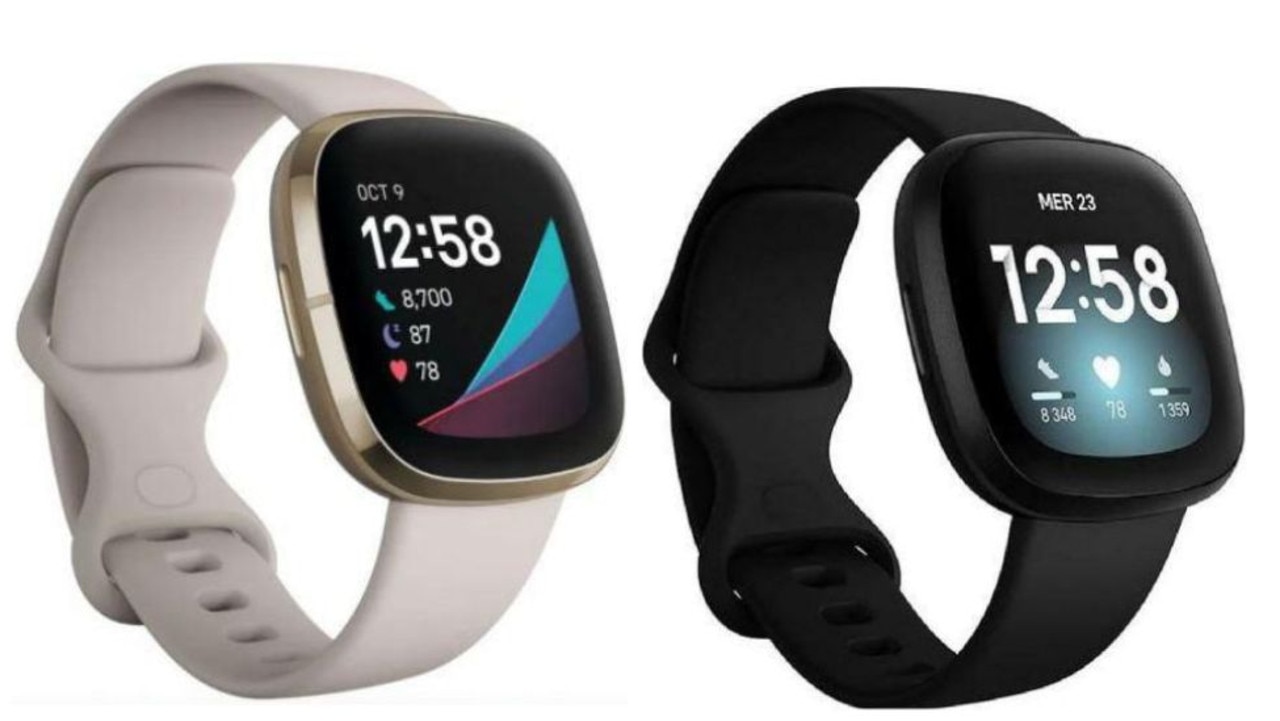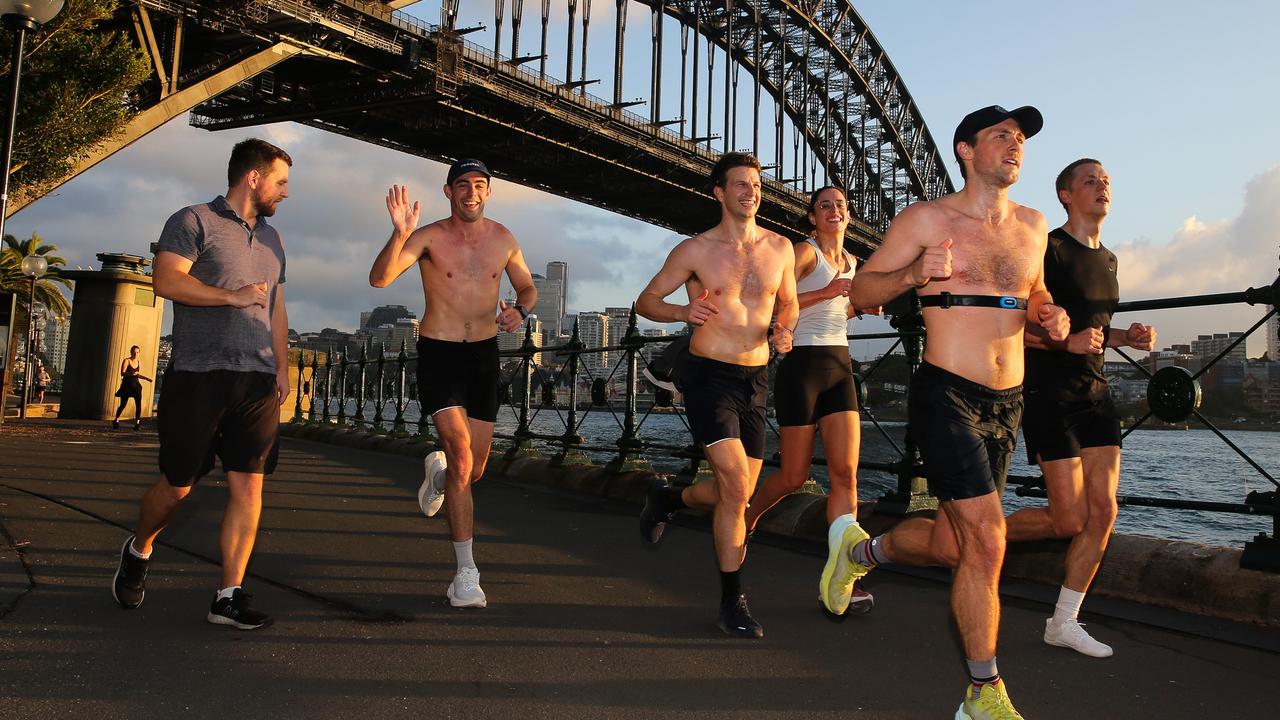Putting the Apple Watch to the test for activity tracking and running
APPLE is pitching the Apple Watch as the one-device to keep you fit. To test it, we took it running for the length of a marathon.
Apple Watch is not just a challenge to other smartwatch makers.
It also presents a choice for those looking at an activity tracker or a dedicated running or cycling watch.
In both arenas, the Watch has strengths and weaknesses.
As an activity tracker, it goes beyond the traditional step count or calorie burn that most offer, by presenting your activity as three circles that you strive to complete.
The Move circle tracks how you have met the challenge of a set calorie burn. You might not be a gym junkie or have an exercise routine, but you can still be motivated by the Move circle.
The Exercise circle acknowledges what those who rely completely on “incidental exercise” fail to acknowledge: exercise must raise your heart rate.

The Exercise metric is about 30 minutes of activity at a brisk walk or above. I took my dog for a 30-minute walk with the intention of completing the Exercise circle but the walk slowed to a stroll and my 30-minute walk converted to just 10 minutes of exercise.
The good thing about this circle is that it is calculated using a combination of sensors. The Watch measures your heart rate so it knows if you’re being active, but also it taps into the GPS and barometer in your phone (iPhone 6 and 6 Plus only).
A common complaint from cyclists about activity trackers is that they don’t calculate cycling well because your arms remain relatively still. The Exercise circle will know from your elevated heart rate and GPS tracking that you are moving fast and working hard.
With the barometer, it can tell also when you’re cruising down a hill, and takes that into
consideration.
Surprisingly, if you look at the detail in the Watch exercise app, you won’t find any information about measuring incline.
Your iPhone can measure incline and, when you look at the Health app on your phone, you can see data on how many flights of stairs your exercise equates too. But the Watch app doesn’t show any incline data.
The Stand circle — the inner circle in the trio — is simple. If you stand for one minute in 12 hours of your day (the hours do not need to be consecutive), you will complete your circle.
As an activity tracker, it is better than some and not as good as others. It will do a better job of calculating sports where your arms remain relatively still, such as cycling, than some activity trackers, but it’s not designed to be submerged, so lap swimmers will be disappointed.
There is also one issue that will make some people choose another device. You have to charge the Apple Watch overnight, so if you’re someone who sees an activity tracker to monitor your least active moments, namely sleeping, then you should consider a Fitbit or Jawbone or the like.
As a running watch, out of the box it is a good starting point and will suit runners who don’t want a sophisticated running watch with bucketloads of data.
It relies on the GPS chip in your phone, although over time its accelerometer calculates your stride length and can be used without a phone.
The native exercise app provides good basic information post-exercise, such as distance run, and pace.
But the real worth of the Watch as a running watch that can provide split times and other detailed data will become more apparent when third-party Watch apps from the likes of Strava, Wahoo and MapMyRun hit the app store.

In the week I’ve had the Watch Sport, I’ve run with it for a total of 44km — a tad over a marathon distance — including one run of 24km.
During those runs, I’ve compared it with a Garmin Forerunner 220, a GPS running watch I wore on the opposite arm.
Yes, running with a sports watch makes you look like someone who cares about data. Running with two sports watch makes you look like a goose. But being a goose, sometimes, is necessary in the line of duty, when your duty is to check out the features of a new device.
To go for a run with the Exercise app in the Apple Watch, you either specify a distance or time you plan to run, or select open run.
You get a three-second countdown to start once you hit the button. Generally, that is fine as you head out for a weekend jog. When you’re trying to time your Watch to activate just as you cross the start line of a race, that three-second delay could be more annoying.


As a long-time fan of GPS running watches, I find GPS watches are more accurate at calculating running pace than GPS phone apps.
At the end of my longest run with the Apple Watch, I found the Garmin and the Apple Watch gave me similar information. The Garmin said I had covered a distance of 23.81km while the Apple Watch said I had covered a distance of 24.03km. The Garmin said my pace was three seconds slower than what the Apple Watch said.
That sort of difference is to be expected and two GPS watches could differ in the same way.
The Garmin calculated I had burnt 1895 calories on the run. The Apple Watch, which measured my heart rate during the run, told me I had burnt 1311 calories.
What was of interest was during the run the two devices told me very different information. While both were in synch in terms of distance, calculating when I reached each kilometre mark, the Apple Watch at times told me my pace was up to 45 seconds slower than what my Garmin reported.
Also, when I reached each kilometre, the Garmin displayed my average pace for the kilometre I had just covered. The Apple Watch showed me my pace that I was currently running. Those two bits of information could naturally be different.
The difference comes down to the way each GPS device “smooths” your pace so that the pace does not jump around.
So, during a run, different devices will show different paces. But at the end of the run, when the device calculates distance travelled in a certain time, the final figure should be close to the mark.

Not every runner is as data obsessed as I am, and the Apple Watch did a good job at the core duty of a running watch, which is to tell you how far and how fast you ran and in what time.
One of the limitations of the Apple Watch, as a running watch, is that it doesn’t have a built-in GPS.
I always run with my phone for safety and because I often want to take photos, so the requirement to carry a phone is not a concern for me. However, for some runners, it will be.
There is an indoor run option you can select when you don’t want to carry your phone. The Watch will learn your stride distance over time, and will then judge your distance from that if you are running on a treadmill or when you’re outside without your phone.
I haven’t run enough with those conditions using the Watch to judge its performance in that way. But, if you’re not concerned that your 5km Saturday jog is exactly 5km, then you’re probably going to find that option acceptable.
There are some things my Garmin watch can do that my Apple Watch, as yet, cannot.
I can program interval runs with the Garmin, with physical and audio cues indicating when I reach each distance and pace target in a routine. Currently, I can’t do that with the Apple Watch. But it’s easy to imagine a third-party app bringing those features to the Watch.
As it stands now, if you have an Apple Watch it is hard to see why you might also want a general activity tracker.
It’s not quite a clear a picture when it comes to the Apple Watch if you’re a keen runner.
Many runners will find it good while more serious runners will find it can’t match dedicated running GPS watches.
But watch this space. That’s the beauty of the app market. The device you buy now is not the device you can use tomorrow.



